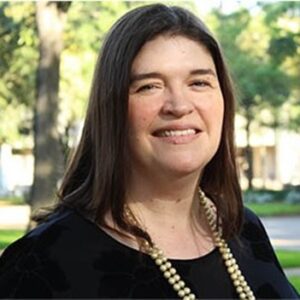Related Products
For Professionals
- Amplification
- Assessment of Student Skills, Challenges, Needs
- Early Childhood: Infants, Toddlers, Preschool
- Hearing Loss – Identification, Impact and Next Steps
- IDEA Law Summary Information
- Language and Speech Development Issues
- Legal Issues in Serving Children with Hearing Loss
- Listening (Auditory Skills) Development
- Planning to Meet Student Needs
- Self-Advocacy Skills for Students with Hearing Loss
- Self-Concept: How the Child with Hearing Loss Sees Himself
- Social Skills
- Speech Perception & Learning
Related Teacher Tools Takeout Items
Supporting Communication for Children who are Deafblind

National Trends
The National Child Count of Children and Youth Who are DeafBlind is the first and longest-running registry of children who are deafblind in the world (National Center on Deafblindness (NCDB, 2022). In 2021, there were 10,441 children and youth identified with deafblindness in the United States (NCDB, 2022), and unlike students from earlier times, the majority are dispersed through the country attending their local public schools, rather than attending large, center-based, specialized schools (Nelson & Bruce, 2016). This fact alone highlights the importance of having qualified personnel in the public school setting who are knowledgeable in best practices for supporting children who are deafblind.
While the total number of children who are deafblind may be a remarkably small population on paper, it is suspected that many more are not identified, leaving some to conclude that the total number of children who are deafblind is much higher than reported (Müller, 2006; NCDB, 2022). To add to the difficulty with identification, the population itself is incredibly complex and diverse. Deafblindness can occur as the result of certain congenital conditions, but it can also happen later in life due to progressive illnesses, trauma, or other causes (Anthony, 2016). There is a wide range of hearing and vision differences across the population, and eighty-seven percent of persons who are deafblind have one or more additional disabilities (NCDB, 2022). Trends such as the evolution of the racial, ethnic, cultural, and linguistic diversity of the general population will undoubtedly increase the heterogeneous nature of this low-incidence population.
With such a diverse population exhibiting a wide range of needs, research suggests that communication and language development should be considered the priority for educational programming for children who are deafblind (Parker, McGinnity, & Bruce, 2012; NCDB, 2017). The NCDB (2017) conducted a national family needs assessment and asked parents of children who were deafblind what their priorities were for their children. Parents reported communication as their top priority, followed by interacting with qualified personnel in their local schools and having their children socially interacting (NCDB, 2017). Communication and language is also a priority for school-aged children as it provides access to the general education curriculum (Parker, McGinnity, & Bruce, 2012). For special education service providers, including teachers of the deaf or visually impaired and teachers of the deafblind, assisting families in exploring, choosing, and committing to a preferred mode of communication early in the development of their child who is deafblind is therefore crucial.
The Least Dangerous Assumption
Children with hearing differences, including deafblindness, typically exhibit delays in their communication and language development because of their decreased and different access to the spoken word (Gioia, 2001; Bruce, 2005; Webb, M.-Y., Lederberg, A.R., Branum-Martin, L., & McDonald Connor, C., 2015). Therefore, it is critical for special education service providers to assist families with their children’s communication and language development as early as possible. When exploring communication mode options with families, special education service providers should maintain an unbiased, neutral approach and assume competence for the child who is deafblind.
According to the Cerebral Palsy Foundation (2017), the least dangerous assumption holds that in the absence of conclusive data, educational decisions ought to be based on assumptions which if incorrect, will have the least dangerous effect on the student. The least dangerous assumption for students with disabilities, including those who have significant or multiple conditions, is to presume competence and assume that a student has intellectual ability. Presuming competence means providing meaningful opportunities for learning, including communication and language interactions, daily reading and writing, and assuming that children want to assert themselves in the world.
Often, children who are congenitally deafblind present unconventional, individualized, and sometimes, challenging behaviors to communicate their needs. Such attempts at communication are often unrecognized and unsupported by those around them (Parker, McGinnity, & Bruce, 2012). Special education service providers may assume that such behaviors are the result of a developmental delay or assumed intellectual disability (Anthony, 2016). All members of the child’s special education team should fully support families’ decisions regarding communication modes for their children who are deafblind and not seek to make changes until conclusive data has been collected to suggest otherwise. Special education teams, including parents, should then collaboratively review the child’s communication and language data to determine other options.
Communication Mode Options
 Because of the extremely heterogenous nature of deafblindness, children who have dual sensory loss utilize a wide range of preferred communication modes. For families of children who are deafblind, choosing one or a combination of communication modes is not straightforward as there are a variety of options. Such options can include –
Because of the extremely heterogenous nature of deafblindness, children who have dual sensory loss utilize a wide range of preferred communication modes. For families of children who are deafblind, choosing one or a combination of communication modes is not straightforward as there are a variety of options. Such options can include –
- Manual communication including American Sign Language (ASL), Signing Exact English (SEE), Pidgin Signed English (PSE), or Conceptually Accurate Signed English (CASE);
- Tactile sign language, haptics, and Pro-Tactile;
- Listening and spoken language (LSL);
- Cueing systems such as Cued Speech;
- Simultaneous Communication (SimCom) or Sign Supported Speech (SSS);
- Object and tactile symbols;
- Symbol-based communication like Core Vocabulary or Picture Exchange Communication Systems; and/or
- Assistive technology options for communication including low and high tech options.
High expectations for children who are deafblind to develop communication and language are essential. Even though some children who are deafblind with severe to profound degrees of disability may struggle to make the leap from unconventional behavioral communication to abstract, symbolic language, the goal for all children who are deafblind should always be to continue to grow and develop their communication and language skills to the best of their individual abilities, scaffolding as appropriate from pre-symbolic expressions to more formal language structures.
The Importance of Early Intervention
When dual sensory loss is identified early, children are then able to receive timely medical and educational interventions that meet their needs (Purvis et al., 2014). Medical interventions may include medication, surgery, and/or prescription of audiological or optical devices (Anthony, 2016), and children who are deafblind who use such hearing and vision assistive technologies may benefit from their early use (Parker, McGinnity, & Bruce, 2012). Research that has examined the brain’s plasticity related to hearing and vision perception also strongly suggests that early identification and early intervention lead to improved outcomes (Mitchell & Maslin, 2007).
The early intervention team should work together to design and implement appropriate instructional strategies and accommodations to promote the child’s communication and language development. Such programming should be individually tailored to the child’s needs, consider opportunities for daily interaction, and focus on a systematic instructional approach (Anthony, 2016). The need for children who are deafblind to be supported by qualified professionals who are knowledgeable and skilled in best practices related to the condition has remained constant for many years (Nelson & Bruce, 2016), and as such, early intervention teams should include such professionals. Should this expertise not be available, then the team should discuss how its professionals will gain knowledge and training specific to deafblindness as expeditiously as possible to support educational programming for the child. Possible starting points include contacting the team’s state deafblind project, examining the Open Hands, Open Access (OHOA): Deaf-Blind Intervener Learning Modules, or Teaching Children who are Deafblind: Professional Learning for Educators.
Conclusion
Though there are only approximately 10,441 students who are deafblind across the U.S., each one of them deserves to receive high-quality instruction by qualified personnel. Early childhood intervention teams and individualized education program (IEP) teams should maintain high expectations and prioritize providing specially designed instruction that is focused on communication and language development. For the child who is deafblind, this programming can be critical to unlocking access to home, school, and community.
Article Written by guest author Marina McCormick, Ed.D.
 Dr. Marina McCormick has 23 years of experience in the field of special education as both a teacher of the deaf and as a special education administrator. She currently serves as the Region 4 Regional Day School Program for the Deaf Coordinator at Region 4 Education Service Center in Houston, Texas and works for both the University of Houston and Texas Tech University as an adjunct instructor in undergraduate and graduate studies related to professional leadership and special education. In addition, Dr. McCormick has served on state and national organizational boards including as the acting President of the Texas Association of Parents and Educators of the Deaf and as one of six Directors on the Council for Exceptional Children’s Division of Visual Impairments and Deafblindness Board.
Dr. Marina McCormick has 23 years of experience in the field of special education as both a teacher of the deaf and as a special education administrator. She currently serves as the Region 4 Regional Day School Program for the Deaf Coordinator at Region 4 Education Service Center in Houston, Texas and works for both the University of Houston and Texas Tech University as an adjunct instructor in undergraduate and graduate studies related to professional leadership and special education. In addition, Dr. McCormick has served on state and national organizational boards including as the acting President of the Texas Association of Parents and Educators of the Deaf and as one of six Directors on the Council for Exceptional Children’s Division of Visual Impairments and Deafblindness Board.
Anthony, T.L. (2016). Early identification of infants and toddlers with deafblindness. American Annals of the Deaf, 161(4), 412-423.
Bruce, S. (2005). The impact of congenital deafblindness on the struggle to symbolism. International Journal of Disability, Development and Education, 52(3), 233-251.
Cerebral Palsy Foundation. (2017, April 5). The least dangerous assumption [Video]. YouTube.
Gioia, B. (2001). The emergent language and literacy experiences of three deaf preschoolers. International Journal of Disability, Development, and Education, 48(4). doi:10.1080/10349120120094293
Mitchell, T.V. & Maslin, M.T. (2007). How vision matters for individuals with hearing loss. International Journal of Audiology, 46, 500-511.
National Center on Deaf-Blindness. (2022). 2021 National deaf-blind child count.
https://www.nationaldb.org/
National Center on Deafblindness. (2017, November). Family needs assessment: Summary report. Monmouth, OR: The Research Institute at Western Oregon University.
Nelson, C., & Bruce, S. M. (2016). Critical issues in the lives of children and youth who are deafblind. American Annals of the Deaf, 161(4), 406–411.
Parker, A. T., McGinnity, B. L., & Bruce, S. M. (2012). Educational programming for students who are deafblind: A position paper of the Division on Visual Impairments. Retrieved from http://community.cec.
Purvis, B., Malloy, P., Schalock, M., McNuity, K., Davies, S., Stremel Thomas, K., & Udell, T. (2014). Early identification and referral of infants and toddlers who are deaf-blind. https://www.
Webb, M.-Y., Lederberg, A.R., Branum-Martin, L., & McDonald Connor, C. (2015). Evaluating the structure of early English literacy skills in deaf and hard-of-hearing children. Journal of Deaf Studies and Deaf Education, 20(4), pp. 343-355.
